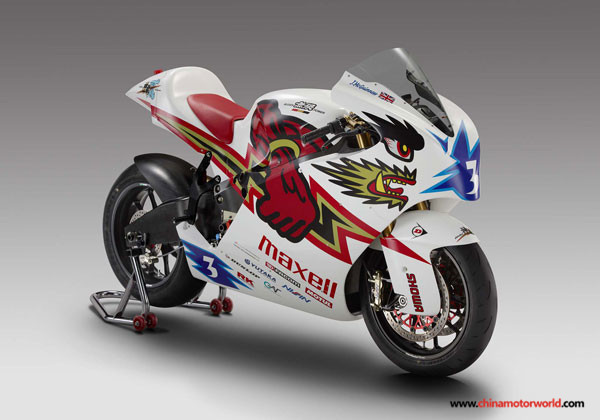MEGA CHINAMOTOR is so honored to have Mr. Ralph Lewis, Doug’s father-in-law, to share his understanding of trends in the industry. Follow leading player or start the trends by anticipation drawn from customers, press, trade shows, etc.? The American motorcyclist may give you some inspirations.
 The only thing that never changes is that everything changes. It would be nice if a business could find a niche, start selling and expect to continue to be successful by doing the same thing over and over. It doesn’t work that way.
The only thing that never changes is that everything changes. It would be nice if a business could find a niche, start selling and expect to continue to be successful by doing the same thing over and over. It doesn’t work that way.
In 1957 General Motors was the largest automobile manufacturing and sales organization in the world. Very few people took notice of the first Toyota vehicles to appear in the US that year. In the beginning, Toyota and the other Japanese car manufacturers had quality problems. Industry analysts dismissed their products as being small, crude and unreliable. Toyota had been manufacturing and selling automobiles and trucks since 1937. It must have been tempting to say something like “We are doing well in the rest of the world – why change for the US market?” But they didn’t do that. Neither did they decide to imitate GM with look-alike products intended to compete head to head with GM. Instead, they focused on reliability and fuel economy while GM and the other Detroit builders continued to build bigger, more powerful cars – the ones that had sold well in the past.

Today, Toyota is number one. GM has gone through bankruptcy and has been reborn as the number two car manufacturer. GM is now imitating Toyota in its quest to regain the number one spot. Toyota led the industry in introducing hybrids. Prius is a huge success that US car makers are scrambling to imitate. Toyota is leading the industry in putting high tech features like collision avoidance, heads up displays and lane sensing technology into their mid range cars while the other manufacturers are just beginning to put them in their high end offerings.
In the motorcycle and ATV world, China is now in the same position that Toyota was in the 50s and 60s. Chinese ATVs are relatively unknown and are viewed as being bargain priced products – but at the expense of durability and reliability. Change is needed.

What trends do we in the ATV market need to be aware of?
- Cleaner vehicles – This is not new. Led by California, the US market is gradually adopting emission standards that include ATVs and motorcycles – even though they are intended for off road use. It is not enough to react to new standards. We need to be anticipating change and developing products that are far enough ahead of the changes that we do not have to stop production to meet new standards. Better still – move on to alternative propulsion systems.
- Alternative propulsion – One way to beat the problem of rising gas prices is to develop propulsion systems that do not rely on gasoline or other fossil fuels. Electric ATVs and motorcycles have been handicapped by the need for heavy, expensive batteries that give the vehicles limited range. Electric motorcycles and ATVs may sound farfetched to some but Honda is showing off the Mugen Shinden Ni electric motorcycle. Portland Oregon resident Michael Czysz has designed what is being touted as the world’s most advanced electric vehicle with 10 times the battery capacity of a Toyota Prius. The MotoCzysc E1pc is the first motorcycle to break the 100 mph lap time at the Isle of Man. Battery technology is evolving. If this technology is coming to motorcycles, ATV quads will not be far behind. Will we see ATVs with regenerative systems that prolong battery life by charging the battery when the vehicle is braking or going downhill? Flexible solar panels now exist that an off-road rider could carry along and use to recharge a battery. There are even concept ATVs using hydrogen fuel cells. Two of these are the ELPH by Indonesian designer Rizki Tarisa and the TrakRok designed by Alexei Mikhailov.
- Fuel economy – If you are not willing to gamble on alternative propulsion systems, focus on fuel economy. The day is long gone when a motorcycle rider could fill up his vehicle’s small tank for less than five dollars. It is not going to get better. Additionally, the off road ATV user will be happy to be able to cover more miles of ground before he has to return to civilization to fuel up.

- New markets – ATVs are popularly associated with getting off road and crashing through rugged terrain. But there are buyers who are more interested in an ATV as a work vehicle – one that they can ride out to the pasture to check fence lines, pull agricultural equipment through vineyards or do golf course maintenance quietly and without fumes to offend golfers. Could this market also evolve into ATVs with enclosed cabins suitable for city dwellers whose need is for smaller, cheaper vehicles intended for short range trips?
- Safety – Expanding into new markets will require additional emphasis on safety. ABS systems and improved crash worthiness will be required if ATVs are to move out of the dirt and into the streets.
- Women riders – We have mentioned this several times in the past year. ATVs and motorcycles are currently targeted at men. When a woman buys an ATV, she shouldn’t have to also customize it to make it fit her needs and desires.
There are more trends developing. Dealers are in the best place to spot the trends. What are customers coming in and asking for? What “crazy” ideas do you hear that could turn into the next hot thing? Try stocking some unusual items and see what sells. Start your own trend – spend some of your own evening and weekend time working on an improvement or an entirely new idea. Then put it out on your floor, promote it and see what happens – or document it and send your idea to the factory telling them why you think they should use your ideas.

We can deal with trends by watching our competitors, seeing what is working for them and then jumping on the bandwagon. This pretty much guarantees that we will never be leaders in the industry. When a popular market dries up, we won’t realize it until we are stuck with inventory we can’t sell and a declining clientele.
We can deal with trends by following the popular press, attending trade shows and searching the Internet to see what trends are developing. See what custom builders are doing. This is incrementally better.
Best of all, we can get creative, take some risks and come up with new ways to use ATVs. We can suggest or even design improvements in performance and safety. By being creative, we can build and sell ATVs that anticipate trends. We can position ourselves to be leaders in the field.

